
How to Use 2-Channel 12V Relay Module: Examples, Pinouts, and Specs
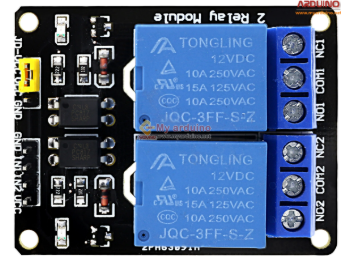
 Design with 2-Channel 12V Relay Module in Cirkit Designer
Design with 2-Channel 12V Relay Module in Cirkit DesignerIntroduction
The 2-Channel 12V Relay Module is an electronic component designed to control two independent circuits using a 12V power supply. It acts as an interface between low-power control systems (e.g., microcontrollers like Arduino) and high-power devices, such as motors, lights, or appliances. This module enables the safe switching of high-voltage or high-current loads using low-voltage control signals.
Explore Projects Built with 2-Channel 12V Relay Module
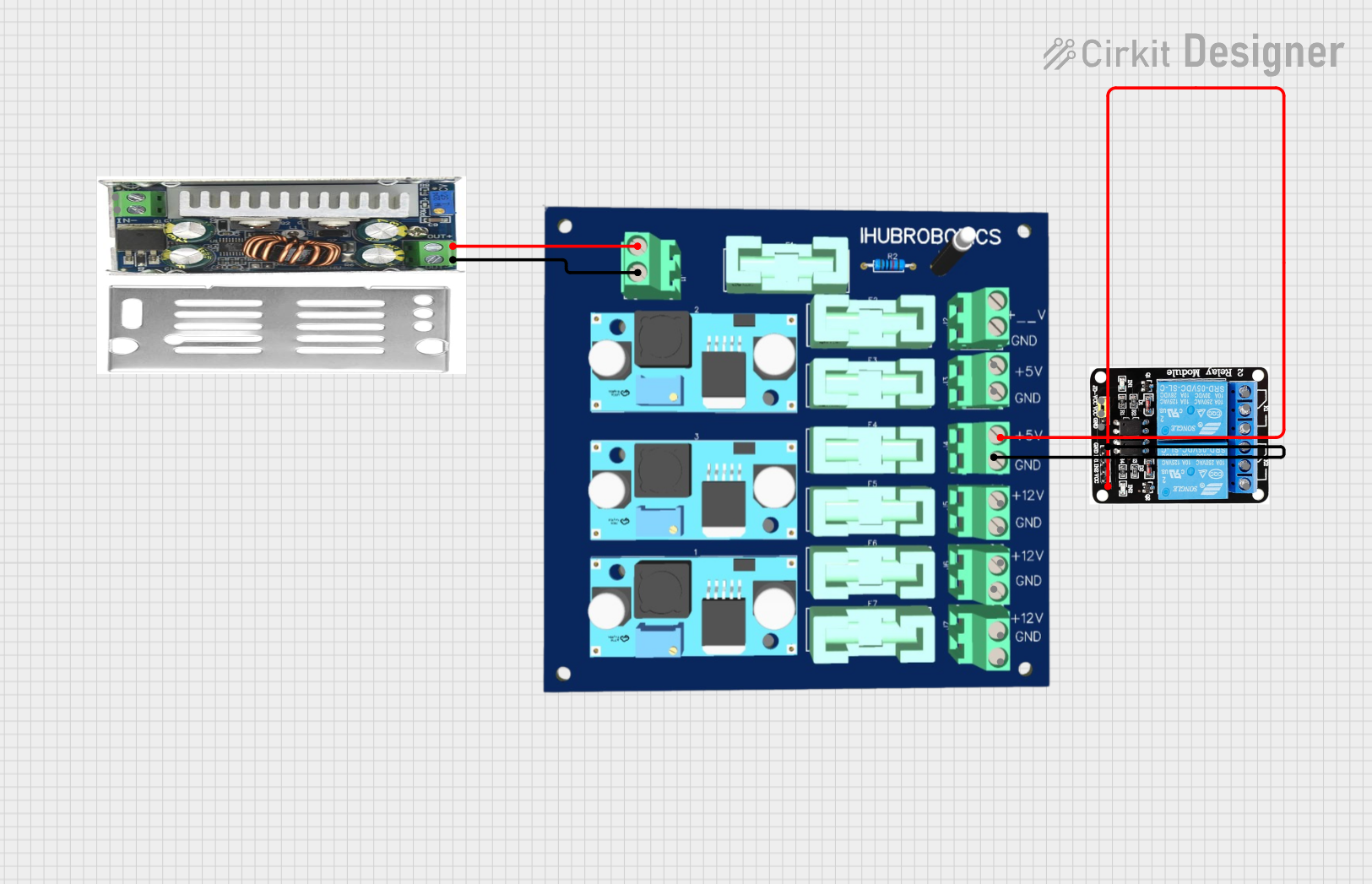
 Open Project in Cirkit Designer
Open Project in Cirkit Designer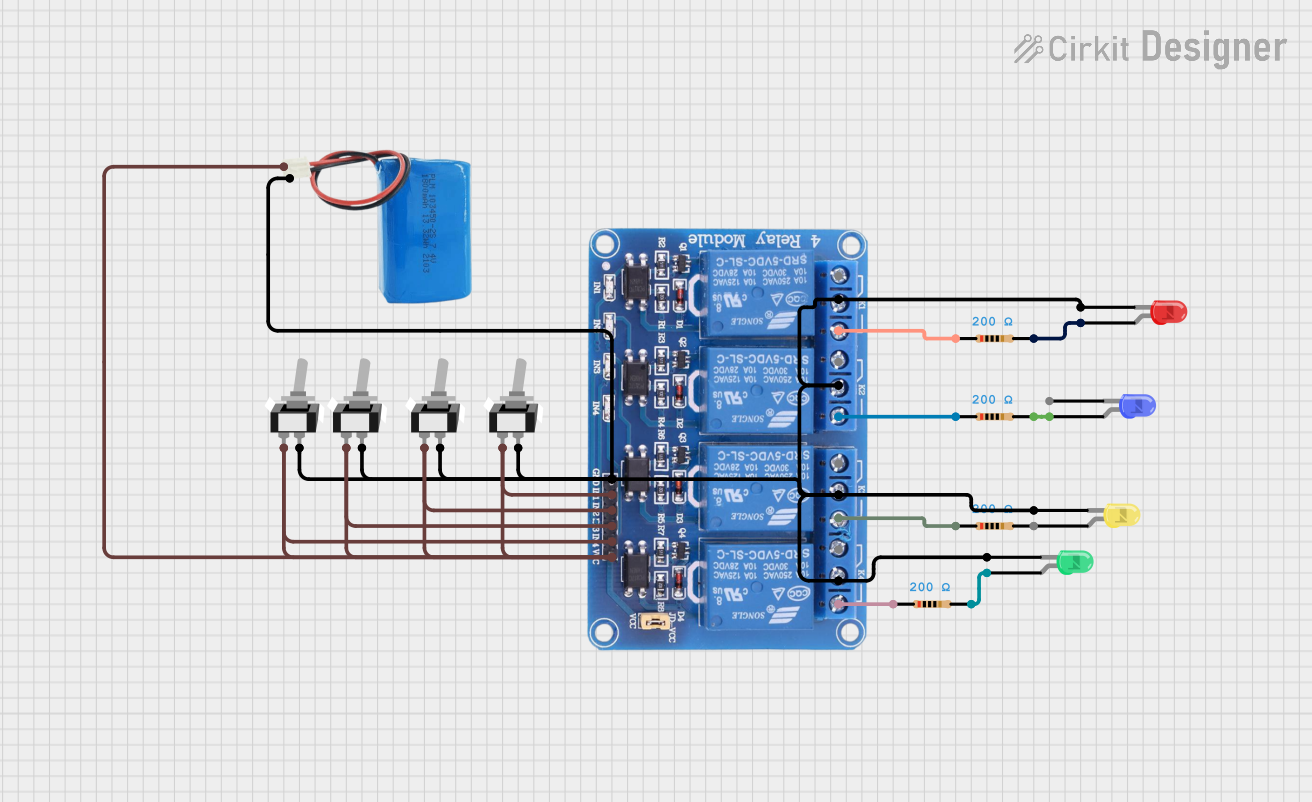
 Open Project in Cirkit Designer
Open Project in Cirkit Designer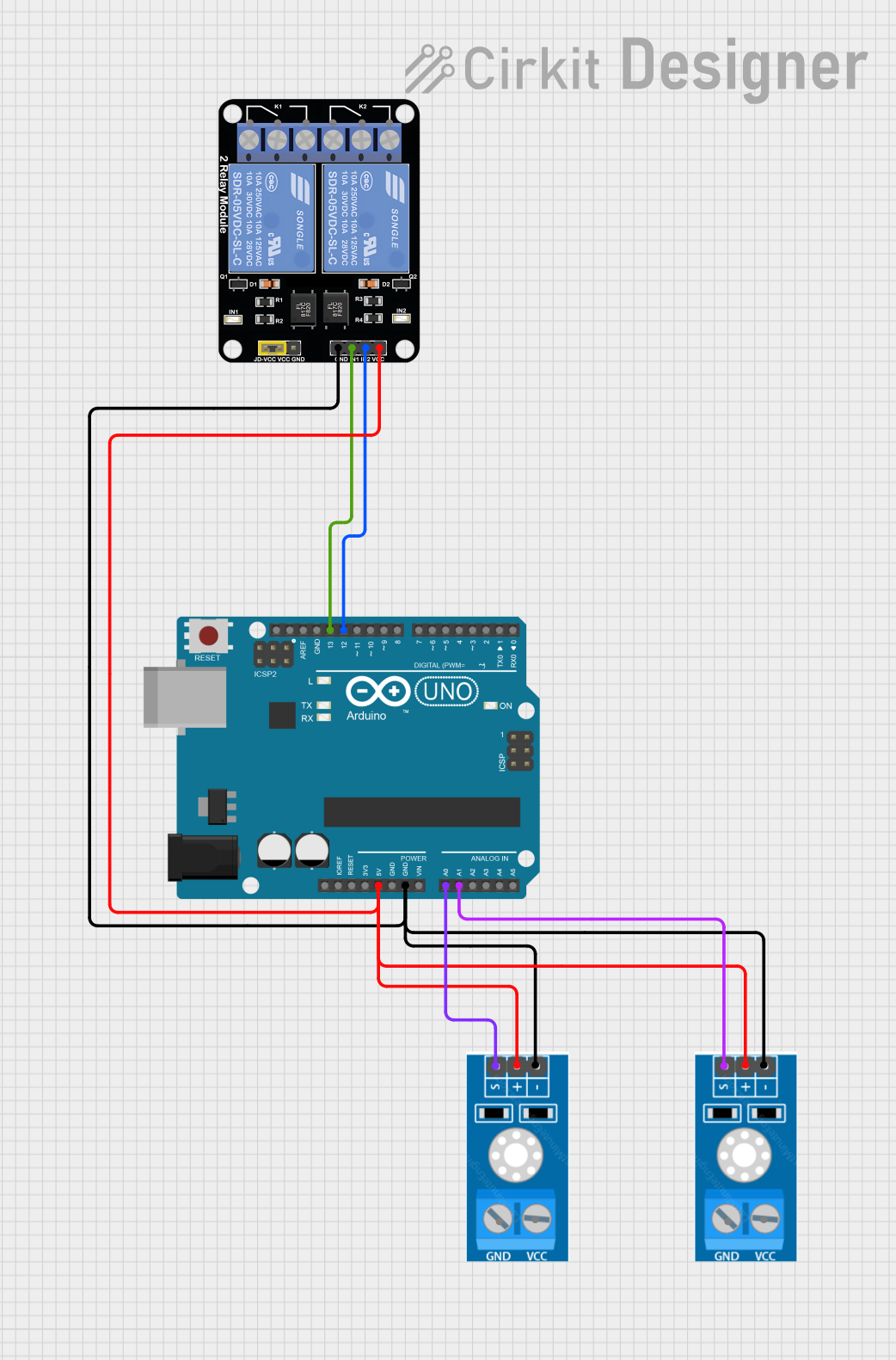
 Open Project in Cirkit Designer
Open Project in Cirkit Designer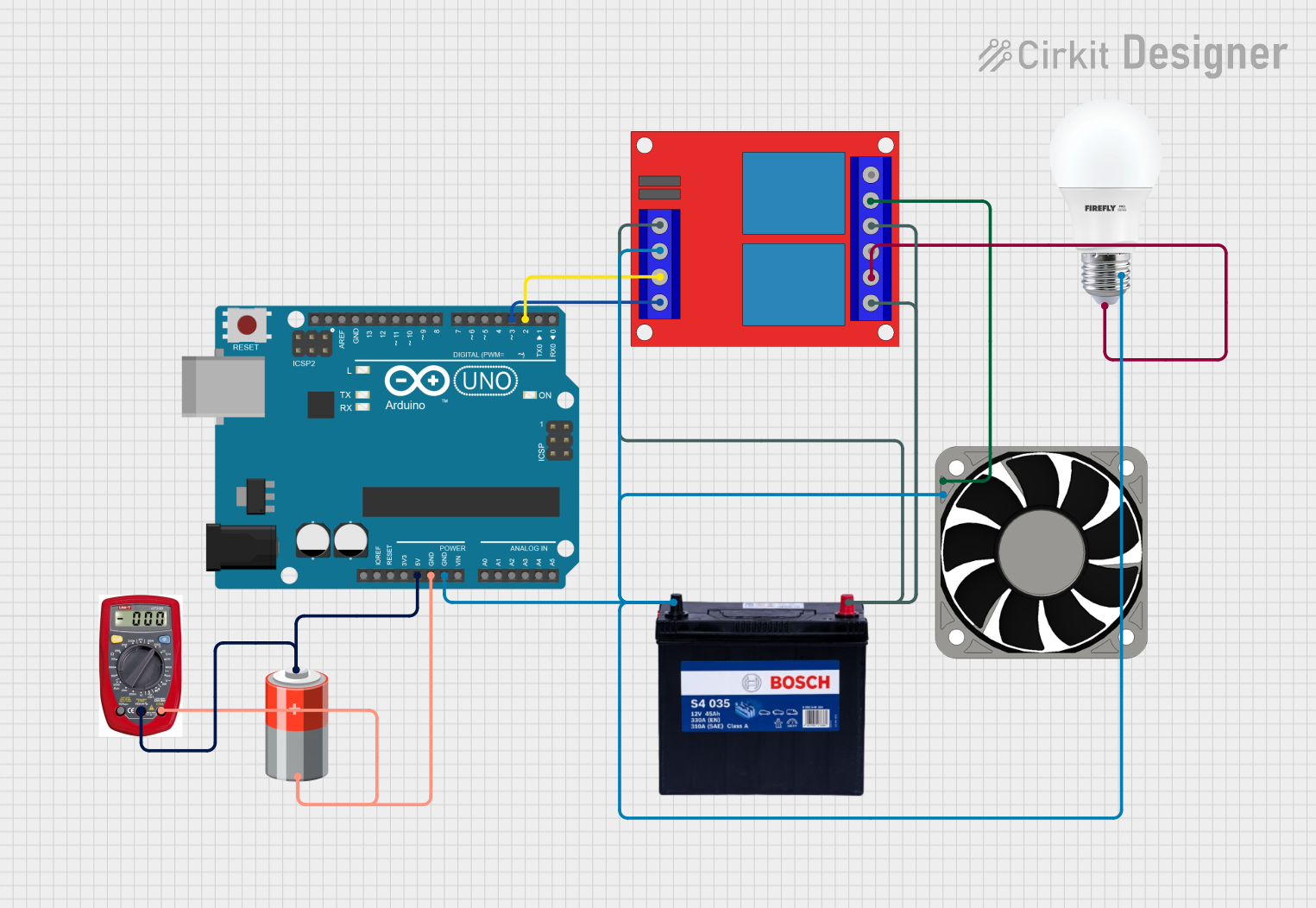
 Open Project in Cirkit Designer
Open Project in Cirkit DesignerExplore Projects Built with 2-Channel 12V Relay Module

 Open Project in Cirkit Designer
Open Project in Cirkit Designer
 Open Project in Cirkit Designer
Open Project in Cirkit Designer
 Open Project in Cirkit Designer
Open Project in Cirkit Designer
 Open Project in Cirkit Designer
Open Project in Cirkit DesignerCommon Applications and Use Cases
- Home automation systems (e.g., controlling lights, fans, or appliances)
- Industrial automation for switching high-power devices
- Robotics and motor control
- IoT projects requiring high-voltage device control
- Security systems (e.g., activating alarms or locks)
Technical Specifications
Key Technical Details
- Operating Voltage (Control Side): 12V DC
- Relay Output Voltage: 250V AC (max) or 30V DC (max)
- Relay Output Current: 10A (max)
- Trigger Voltage (Input Signal): 3-12V DC (logic low trigger)
- Number of Channels: 2
- Isolation: Optocoupler isolation for safe operation
- Dimensions: ~50mm x 40mm x 20mm
- Indicator LEDs: Onboard LEDs for relay status indication
Pin Configuration and Descriptions
The 2-Channel 12V Relay Module has two main sections: the input (control) side and the output (load) side.
Input (Control) Pins
| Pin Name | Description |
|---|---|
| VCC | Connect to the 12V DC power supply (positive terminal). |
| GND | Connect to the ground of the power supply. |
| IN1 | Control signal for Relay 1. A logic LOW (0V) activates the relay. |
| IN2 | Control signal for Relay 2. A logic LOW (0V) activates the relay. |
Output (Load) Terminals
Each relay has three output terminals: COM, NO, and NC.
| Terminal Name | Description |
|---|---|
| COM | Common terminal. Connect to the power source or load. |
| NO | Normally Open terminal. Connect to the load if you want it OFF by default. |
| NC | Normally Closed terminal. Connect to the load if you want it ON by default. |
Usage Instructions
How to Use the Component in a Circuit
Power the Module:
- Connect the VCC pin to a 12V DC power supply and the GND pin to the ground.
- Ensure the power supply can provide sufficient current for the relays (typically ~70mA per relay).
Connect the Control Signals:
- Connect the IN1 and IN2 pins to the control signals from a microcontroller (e.g., Arduino).
- A logic LOW (0V) on IN1 or IN2 will activate the corresponding relay.
Connect the Load:
- Identify whether the load should be connected to the NO or NC terminal based on the desired default state.
- Connect the power source and load to the appropriate terminals (COM, NO, or NC).
Test the Circuit:
- When the control signal is LOW, the relay will activate, switching the load between the COM and NO terminals.
Important Considerations and Best Practices
- Isolation: The module uses optocouplers for isolation, but ensure proper grounding between the control and load circuits.
- Load Ratings: Do not exceed the maximum voltage (250V AC or 30V DC) or current (10A) ratings of the relays.
- Flyback Diodes: For inductive loads (e.g., motors), use flyback diodes across the load to protect the relay from voltage spikes.
- Power Supply: Use a stable 12V DC power supply to avoid relay malfunction.
Example: Connecting to an Arduino UNO
Below is an example of how to control the 2-Channel 12V Relay Module using an Arduino UNO.
Circuit Connections
- Connect the module's VCC to the Arduino's 12V power supply.
- Connect the module's GND to the Arduino's GND.
- Connect IN1 to Arduino digital pin 7 and IN2 to Arduino digital pin 8.
Arduino Code
// Define the relay control pins
const int relay1 = 7; // Relay 1 connected to digital pin 7
const int relay2 = 8; // Relay 2 connected to digital pin 8
void setup() {
// Set relay pins as outputs
pinMode(relay1, OUTPUT);
pinMode(relay2, OUTPUT);
// Initialize relays to OFF state (HIGH signal)
digitalWrite(relay1, HIGH);
digitalWrite(relay2, HIGH);
}
void loop() {
// Turn Relay 1 ON
digitalWrite(relay1, LOW); // LOW signal activates the relay
delay(2000); // Wait for 2 seconds
// Turn Relay 1 OFF
digitalWrite(relay1, HIGH); // HIGH signal deactivates the relay
delay(2000); // Wait for 2 seconds
// Turn Relay 2 ON
digitalWrite(relay2, LOW);
delay(2000);
// Turn Relay 2 OFF
digitalWrite(relay2, HIGH);
delay(2000);
}
Troubleshooting and FAQs
Common Issues and Solutions
Relays Not Activating:
- Ensure the module is powered with a stable 12V DC supply.
- Verify that the control signals (IN1/IN2) are correctly connected and set to logic LOW.
Load Not Switching:
- Check the wiring of the load to the COM, NO, and NC terminals.
- Ensure the load does not exceed the relay's voltage or current ratings.
Relay Clicking Noise:
- This may indicate an unstable power supply. Use a regulated 12V DC source.
Arduino Resetting When Relays Activate:
- The relays may draw too much current, causing voltage drops. Use a separate 12V power supply for the relay module.
FAQs
Q: Can I use a 5V power supply instead of 12V?
A: No, this module is designed specifically for 12V operation. Using a lower voltage may cause malfunction.
Q: Can I control AC and DC loads simultaneously?
A: Yes, as long as each load is connected to a separate relay and does not exceed the relay's ratings.
Q: Is it safe to use this module with high-voltage devices?
A: Yes, but ensure proper insulation and safety precautions when working with high voltages.